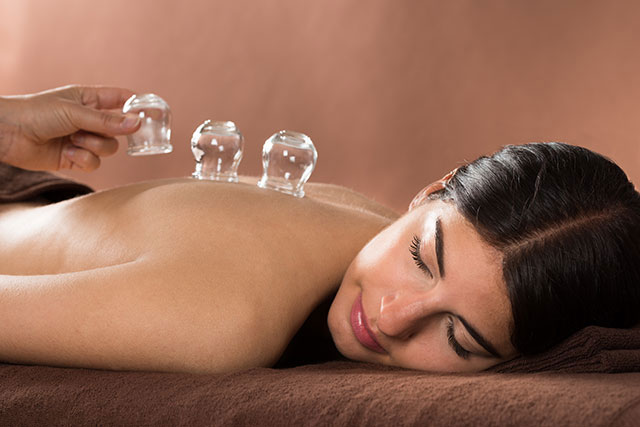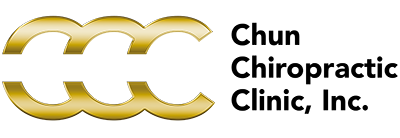What is cupping therapy?
By Debra Sullivan, PhD

What is cupping?
Cupping is a type of alternative therapy that originated in China. It involves placing cups on the skin to create suction. The suction may facilitate healing with blood flow.
Proponents also claim that suction helps facilitate the flow of “qi” in the body. Qi is a Chinese word meaning life force. A famous Taoist alchemist and herbalist, Ge Hong, reportedly first practiced cupping. He lived from A.D. 281 to 341.
Many Taoists believe that cupping helps balance yin and yang, or the negative and positive, within the body. Restoring balance between these two extremes is thought to help with the body’s resistance to pathogens as well as its ability to increase blood flow and reduce pain.
Cupping increases blood circulation to the area where the cups are placed. This may relieve muscle tension, which can improve overall blood flow and promote cell repair. It may also help form new connective tissues and create new blood vessels in the tissue.
People use cupping to complement their care for a host of issues and conditions.
What are the different types of cupping?
Cupping was originally performed using animal horns. Later, the “cups” were made from bamboo and then ceramic. The suction was primarily created through the use of heat. The cups were originally heated with fire and then applied to the skin. As they cooled, the cups drew the skin inside.
Modern cupping is often performed using glass cups that are rounded like balls and open on one end.
There are two main categories of cupping performed today:
- Dry cupping is a suction-only method.
- Wet cupping may involve both suction and controlled medicinal bleeding.
Your practitioner, your medical condition, and your preferences will help determine what method is used.
What should I expect during a cupping treatment?
During a cupping treatment, a cup is placed on the skin and then heated or suctioned onto the skin. The cup is often heated with fire using alcohol, herbs, or paper that’s placed directly into the cup. The fire source is removed, and the heated cup is placed with the open side directly on your skin.
Some modern cupping practitioners have shifted to using rubber pumps to create suction versus more traditional heat methods.
When the hot cup is placed on your skin, the air inside the cup cools and creates a vacuum that draws the skin and muscle upward into the cup. Your skin may turn red as the blood vessels respond to the change in pressure.
With dry cupping, the cup is set in place for a set time, usually between 5 and 10 minutes. With wet cupping, cups are usually only in place for a few minutes before the practitioner removes the cup and makes a small incision to draw blood.
After the cups are removed, the practitioner may cover the previously cupped areas with ointment and bandages. This helps prevent infection. Any mild bruising or other marks usually go away within 10 days of the session.
Cupping is sometimes performed along with acupuncture treatments. For best results, you may also want to fast or eat only light meals for two to three hours before your cupping session.
What conditions can cupping treat?
Cupping has been used to treat a wide variety of conditions. It may be particularly effective at easing conditions that create muscle aches and pains.
Since the cups can also be applied to major acupressure points, the practice is possibly effective at treating digestive issues, skin issues, and other conditions commonly treated with acupressure.
A 2012 review of studies Trusted Source suggests cupping therapy’s healing power may be more than just a placebo effect. The researchers found that cupping therapy may help with the following conditions, among others:
However, the authors acknowledge that most of the 135 studies they reviewed contain a high level of bias. More studies are needed to assess the true effectiveness of cupping.
Side effects
There aren’t many side effects associated with cupping. The side effects you may experience will typically occur during your treatment or immediately after.
You may feel lightheaded or dizzy during your treatment. You may also experience sweating or nausea.
After treatment, the skin around the rim of the cup may become irritated and marked in a circular pattern. You may also have pain at incision sites or feel lightheaded or dizzy shortly after your session.
Infection is always a risk after undergoing cupping therapy. The risk is small and usually avoided if your practitioner follows the right methods for cleaning your skin and controlling infection before and after your session.
Other risks include:
- scarring of the skin
- hematoma (bruising)
Your practitioner should wear an apron, disposable gloves, and goggles or other eye protection. They should also use clean equipment and have regular vaccines to ensure protection against certain diseases, like hepatitis.
Always research practitioners thoroughly to protect your own safety.
If you experience any of these issues, consult your practitioner. They may offer remedies or steps you can take before your session in order to avoid any discomfort.
Things to keep in mind
Most medical professionals don’t have training or a background in complementary and alternative medicine (CAM). Your doctor may be cautious or uncomfortable with answering questions related to healing methods like cupping.
Some CAM practitioners may be particularly enthusiastic about their methods, even suggesting you skip over conventional medical treatments advised by your doctor.
But if you do choose to try cupping as part of your treatment plan, discuss your decision with your doctor. Continue with regular doctor visits related to your condition to get the best of both worlds.
Cupping therapy isn’t recommended for everyone. Extra caution should be taken for the following groups:
- Children. Children under 4 years old shouldn’t receive cupping therapy. Older children should only be treated for very short periods.
- Seniors. Our skin becomes more fragile as we age. Any medication you may be taking might have an effect as well.
- Pregnant people. Avoid cupping the abdomen and lower back.
- Those who are currently menstruating.
Don’t use cupping if you use blood-thinning medication. Also avoid cupping if you have:
- a sunburn
- a wound
- a skin ulcer
- experienced recent trauma
- an internal organ disorder
Preparing for your cupping appointment
Cupping is a long-practiced treatment that may help ease the symptoms of both temporary and chronic health conditions.
As with many alternative therapies, keep in mind that there haven’t been extensive studies performed without bias to fully assess its true effectiveness.
If you choose to try cupping, consider using it as a complement to your current doctor visits, not a substitute.
Here are some things to consider before beginning cupping therapy:
- What conditions does the cupping practitioner specialize in treating?
- What method of cupping does the practitioner use?
- Is the facility clean? Does the practitioner implement safety measurements?
- Does the practitioner have any certifications?
- Do you have a condition that may benefit from cupping?
Before beginning any alternative therapy, remember to let your doctor know that you’re planning to incorporate it into your treatment plan.
